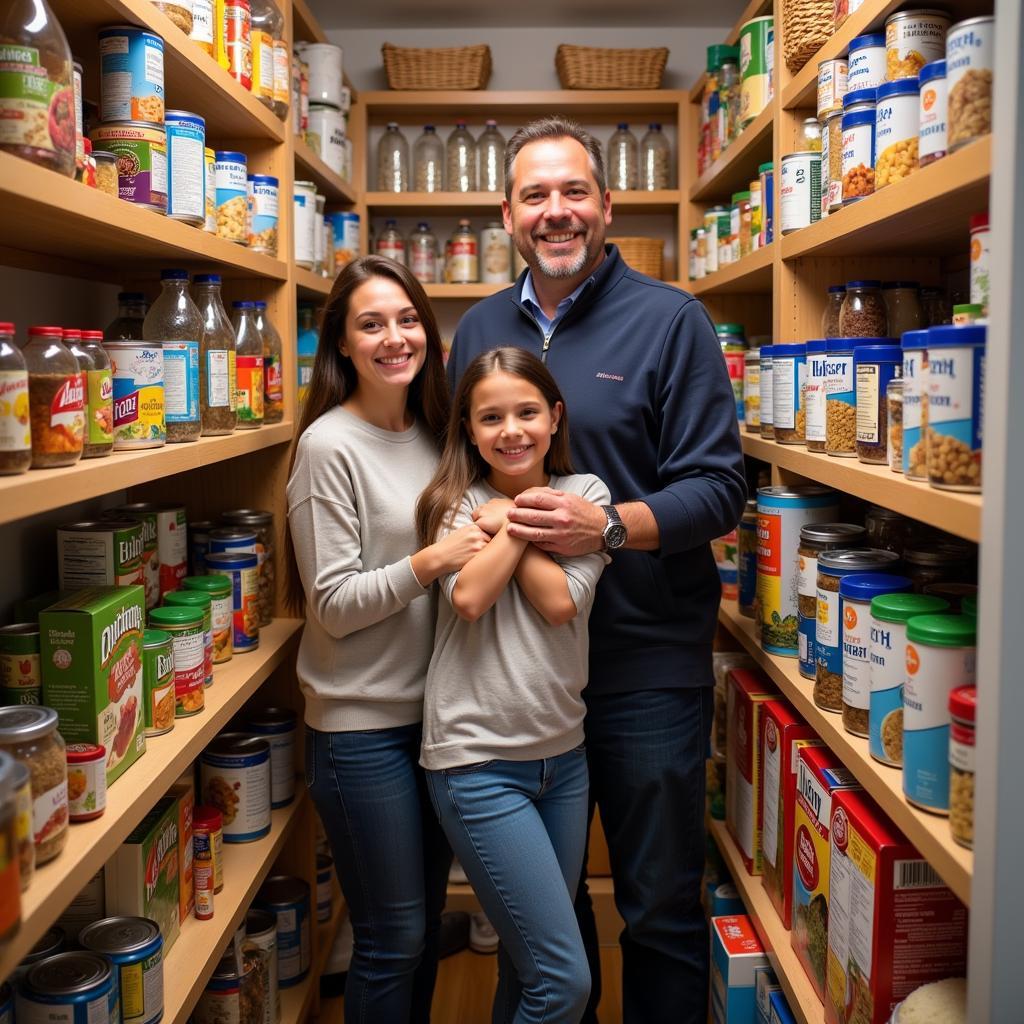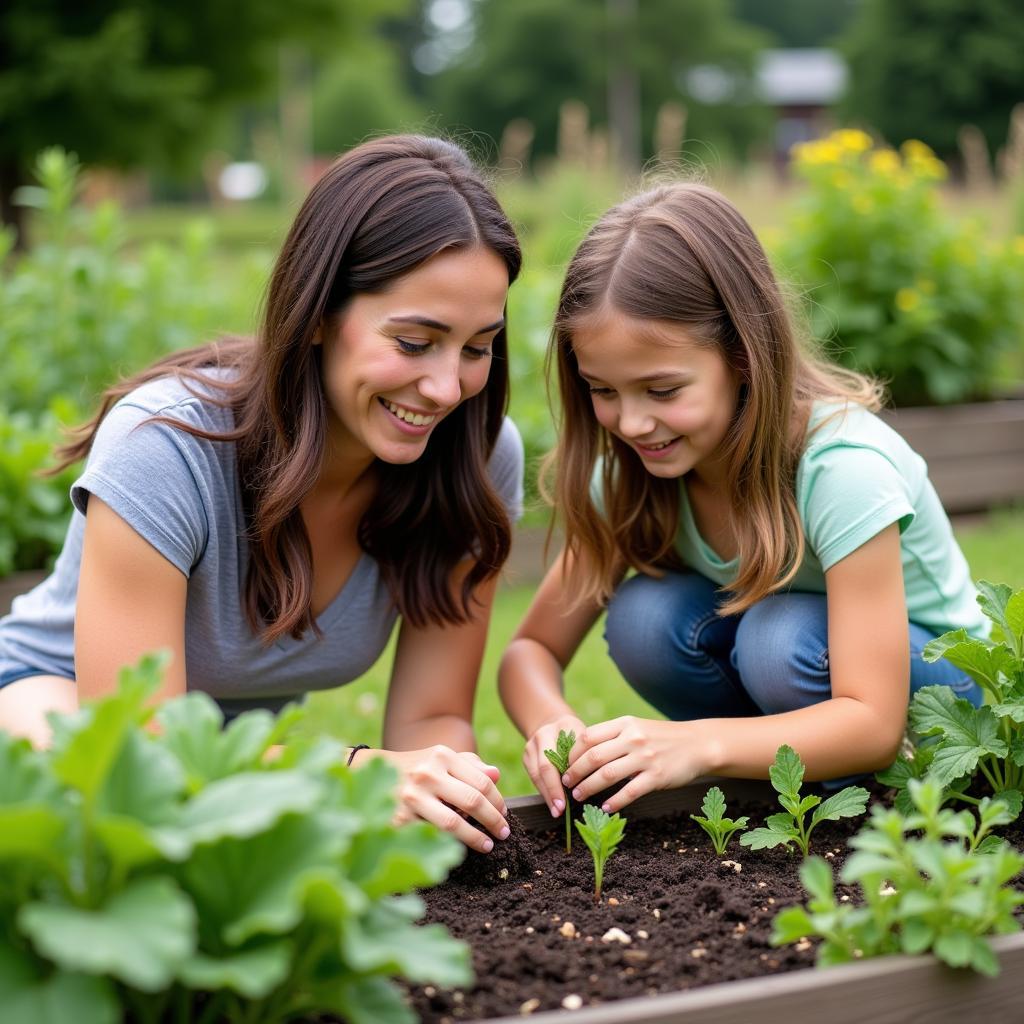Planning for the future can feel daunting, especially when it comes to something as essential as food. But what if you could have peace of mind knowing you had a secure, long-lasting source of nourishment for you and your loved ones? That’s where building a 10 Year Food Supply comes in. It’s not about stockpiling for doomsday, but rather about taking control of your family’s well-being and preparedness.
 Family Gathering Around Well-Stocked Pantry Shelves
Family Gathering Around Well-Stocked Pantry Shelves
Why Consider a 10 Year Food Supply?
A 10 year food supply might sound extreme at first, but consider this: it’s about creating a safety net for a variety of situations, not just large-scale emergencies. Think temporary job loss, natural disasters that disrupt supply chains, or even unexpected personal crises. Having a well-stocked pantry provides invaluable peace of mind and practical support during uncertain times.
Planning Your Long-Term Food Storage
Building a 10 year food supply is a marathon, not a sprint. Start by breaking down the process into manageable steps:
1. Assess Your Needs:
- How many people are you preparing for? Consider family members and any potential guests.
- Dietary needs and preferences: Factor in allergies, special diets, and individual tastes to ensure everyone’s needs are met.
- Calculate daily caloric intake: Research recommended daily calorie intake for different age groups and activity levels to determine your overall needs.
2. Choose the Right Foods:
- Prioritize shelf-stable options: Focus on foods with a long shelf life like:
- Patriot Prep Food
- Freeze-dried fruits, vegetables, and meats
- Grains (rice, oats, wheat)
- Legumes (beans, lentils)
- Nuts and seeds
- Honey and sugar
- Salt and spices
- Don’t forget flavor and variety: Include comfort foods, spices, and seasonings to keep meals interesting and enjoyable.
- Consider nutritional value: Opt for nutrient-dense foods to ensure your body gets the vitamins and minerals it needs.
 Rows of Labeled Food Storage Containers
Rows of Labeled Food Storage Containers
3. Master the Art of Rotation:
- “First in, first out” (FIFO): Implement a system where you use the oldest items first to prevent spoilage and waste.
- Date everything: Clearly label all containers with purchase and expiration dates for easy tracking.
- Periodically inspect: Regularly check your supplies for signs of deterioration, pests, or damage.
Essential Tips for Success:
- Start small and gradually build up: You don’t have to buy everything at once. Add to your supplies over time.
- Shop sales and bulk discounts: Look for deals on shelf-stable items to save money in the long run.
- Learn basic preservation methods: Explore canning, dehydrating, and freezing to extend the shelf life of fresh produce.
- Invest in proper storage: Use airtight containers, mylar bags, and oxygen absorbers to protect your food from moisture, pests, and oxidation. Consider a mylar bag food storage chart to guide you.
- Don’t forget water: Water is essential for survival. Aim to store at least one gallon per person per day.
“A 10 year food supply isn’t about living in fear; it’s about living with confidence,” says preparedness expert Sarah Miller. “It’s a tangible way to protect your family and create a sense of security, no matter what challenges life throws your way.”
Creating a Sustainable System:
Building a 10 year food supply isn’t just about accumulating goods; it’s about creating a sustainable system.
- Consider gardening: Even a small garden can supplement your food supply with fresh produce.
- Explore alternative cooking methods: Familiarize yourself with cooking methods that require less fuel or electricity, such as solar ovens or wood-burning stoves.
- Learn basic food preservation skills: Canning, dehydrating, and fermenting can significantly extend the shelf life of your food.
 Woman and Child Gardening Together
Woman and Child Gardening Together
Conclusion:
Building a 10 year food supply is a significant undertaking, but it’s an investment in your family’s future well-being. By taking it step by step, choosing the right foods, and creating a sustainable system, you can achieve the peace of mind that comes with knowing you’re prepared for whatever lies ahead. For those needing help getting started, exploring resources like survival foods and supplies can provide valuable guidance and support. Remember, preparedness isn’t about predicting the future; it’s about equipping yourself to handle it.